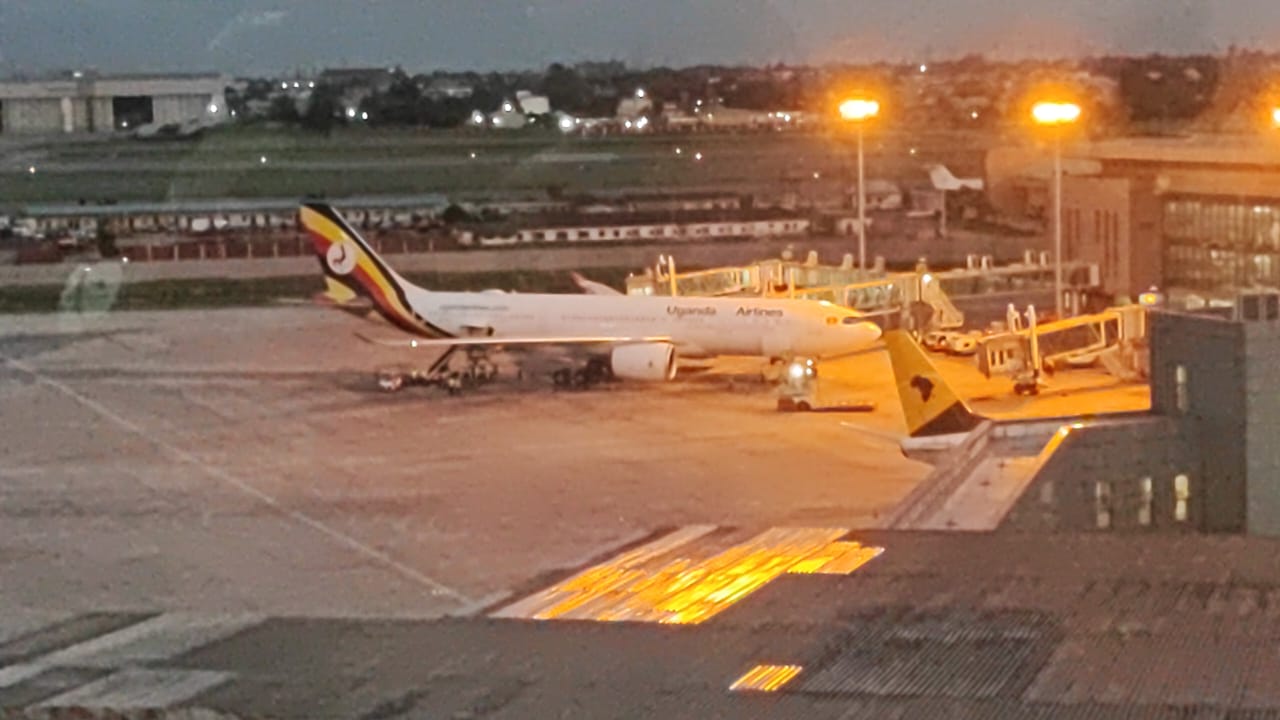Uganda Airlines weathers flight disruptions as pilot shortages bite
 Elgon, the Uganda Airlines A330-800 at the gate at Lagos Murtala Muhammad, on October 19, 2023
Elgon, the Uganda Airlines A330-800 at the gate at Lagos Murtala Muhammad, on October 19, 2023
Michael Wakabi
Uganda Airlines and her passengers endured significant flight disruptions during the peak December 2023 travel period, as the flag carrier struggled to cope with biting crew shortages on its regional workhorse CRJ fleet.
The carrier was forced to delay or cancel flights altogether in order to stay within safe operating margins relating to crew rest times, chief executive officer Jenifer Bamuturaki told a section of journalists February 3, on the sidelines of a senior management retreat, at Speke Resort Munyonyo in Kampala.
“While we had the aircraft, we did not have the pilots. In order not to burst safety margins with the available crew roster, we had to sacrifice the schedule, which resulted in with frequent flight delays or postponements during December,” she explained.
Flanked by head of flight operations David Kaweesa and head of compliance Michael Kaliisa, Bamuturaki was reacting to reacting to recent media reports in which the Uganda Professional Pilots Association accused Uganda Airlines of working flight crew for as long as 17 consecutive days without a break.
“That is not true and cannot happen because regulatory requirements and our own internal controls,” said Kaweesa adding that under the carrier’s own best practices, flight crew cannot work beyond five consecutive days without resting for two days.
“We have a two-way check in that I’m not allowed to schedule someone out of the legal requirements and that officer should not accept any duty which is illegal. So, it is two ways, I am not allowed, and the officer is not allowed,” Kaweesa emphasized.
Bumutaraki further revealed that the airline had lost eight expatriate pilots during the last quarter of calendar 2023 who had been offered opportunities on widebody aircraft by the big network carriers. While efforts to replace were underway, this introduced new operational pressures as the carrier worked to remain compliant with global flight crew limitation rules, which require a flight crewmember to rest for a minimum 8 hours within 24 consecutive hours.
To further avoid excursions from the operational safety envelope, the flight schedule was pared down to the bare minimum, while expansion plans were also put on hold.
Recently, the carrier has also introduced the Laminar Crew Management System to automate scheduling of flight crew. Initially launched for the A330 fleet, the system automates crew scheduling and will automatically override attempts by anyone, to schedule crews for flight outside set algorithms.
Uganda Airlines operates to 13 destinations using a fleet of six aircraft, including a pair of Airbus A330-800 neos and four CRJ900-LR for regional operations.
While efforts to recruit new pilots are ongoing and there are 12 in the pipeline, it has not been a smooth ride. In one of the intakes for flight crew, only 4 of 68 pilots interviewed passed the preliminary assessment, Kaweesa revealed.
“We spend up to USD 40,000 to qualify a pilot on the CRJ. I cannot afford to take in pilots who will fail the last step because that would be a heavy cost and loss to the airline and the shareholders,” Kaweesa said as he explained the rigorous four-step process that candidates for pilot positions have to undergo.
No financial losses were associated with the departure of the expatriate pilots because they were already qualified on the CRJ, he added.

 African Heads of state head to South Korea next week for Summit talks
African Heads of state head to South Korea next week for Summit talks
 Trading leads as main source of income for Ugandans
Trading leads as main source of income for Ugandans
 New leadership for bankers’ umbrella as total assets top $12 billion
New leadership for bankers’ umbrella as total assets top $12 billion
 Brussels Airlines to announce Nairobi service
Brussels Airlines to announce Nairobi service
 SITA promises enhanced travel experience after Materna acquisition
SITA promises enhanced travel experience after Materna acquisition
 Saudia’s 105 aircraft order stretches A320neo lead over rival Max
Saudia’s 105 aircraft order stretches A320neo lead over rival Max
